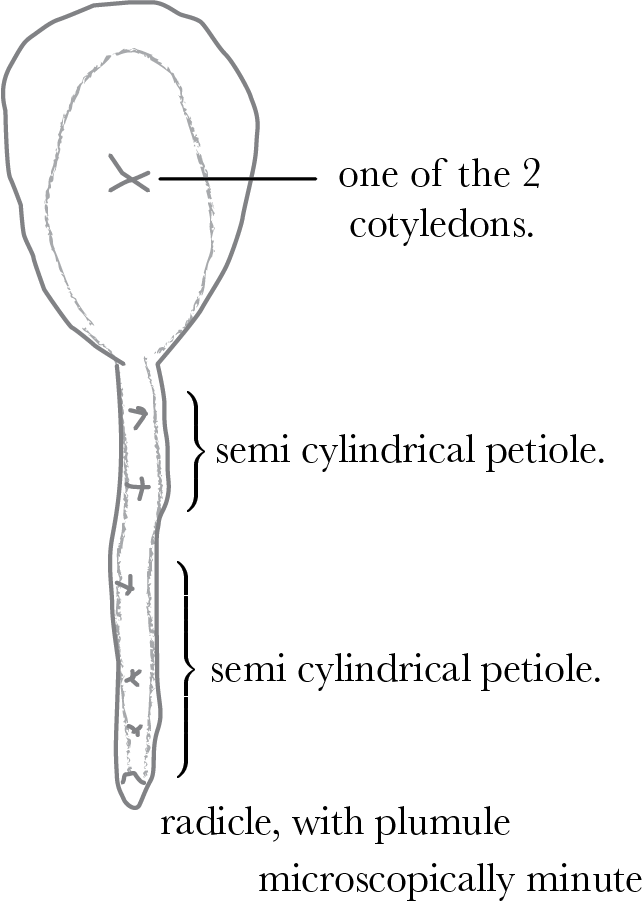To Asa Gray 17 February 1880
Down, | Beckenham, Kent. | Railway Station | Orpington. S.E.R.
Feb 17/80
My dear Gray,
If my letter opened your eyes, yours has opened mine much wider. It is very strange that plants, if they belong to the same species, should behave so differently.1 The seeds were laid on the surface or buried in a mixture of peat sand & common soil, & this may have yielded more easily than your soil. From the extraordinary intermission in the growth of the true radicle, from the root-hairs & from the petiole staining brown with permanganate of potash I must believe that the normal function is to bury itself.2
My plants are growing very vigorously. Should they flower, I will send some dried with leaves, for the chance of your being able to name them.— I am astounded at the whole case.— I suppose when the petioles grow in the air they are stiffer than when hypogæan, for mine could not support the weight of the cotyledons.3 One seed germinated abnormally; one alone of the 2 cotyledons emitted its petiole, which was a hollow cylinder, as in sketch with mere rudiment of true radicle, with a minute plumule.
Ever my dear Gray | Yours very sincerely | Ch. Darwin
P.S. Some of the seeds received last were a little flattened & evidently different; they were sown separately, but not one germinated.4

Footnotes
Summary
Seed germination.
Strange that his plants [of Megarrhiza] behaved differently from AG’s [see 12455].
Letter details
- Letter no.
- DCP-LETT-12489
- From
- Charles Robert Darwin
- To
- Asa Gray
- Sent from
- Down
- Source of text
- Archives of the Gray Herbarium, Harvard University (128)
- Physical description
- ALS 4pp sketch
Please cite as
Darwin Correspondence Project, “Letter no. 12489,” accessed on 24 April 2024, https://www.darwinproject.ac.uk/letter/?docId=letters/DCP-LETT-12489.xml


